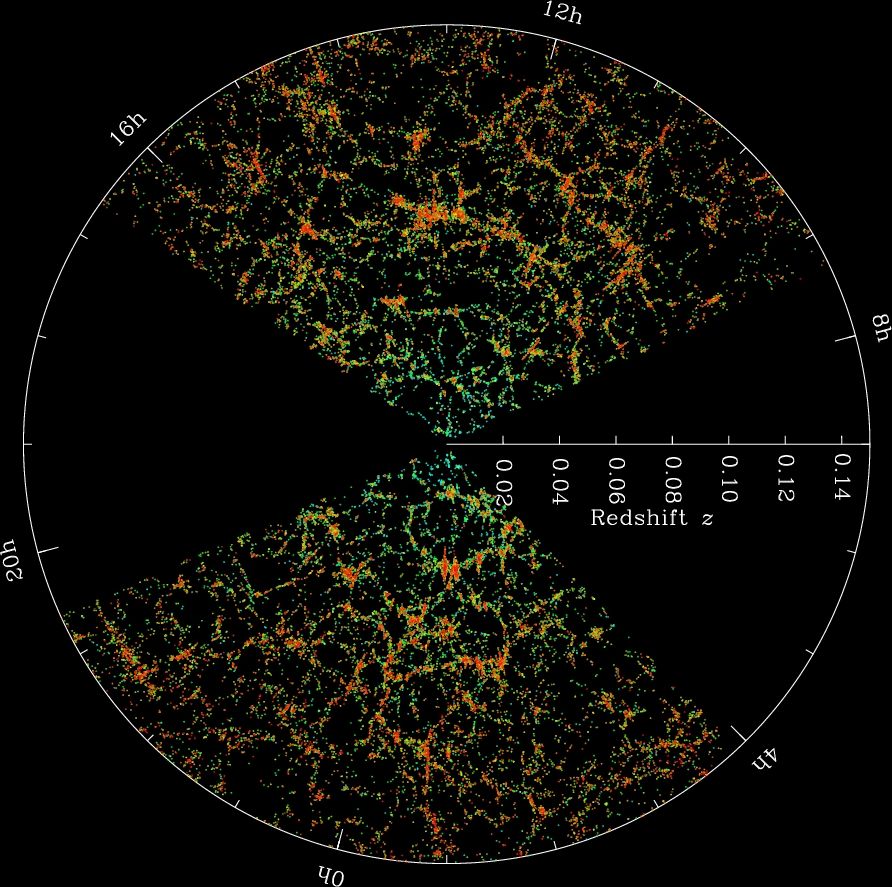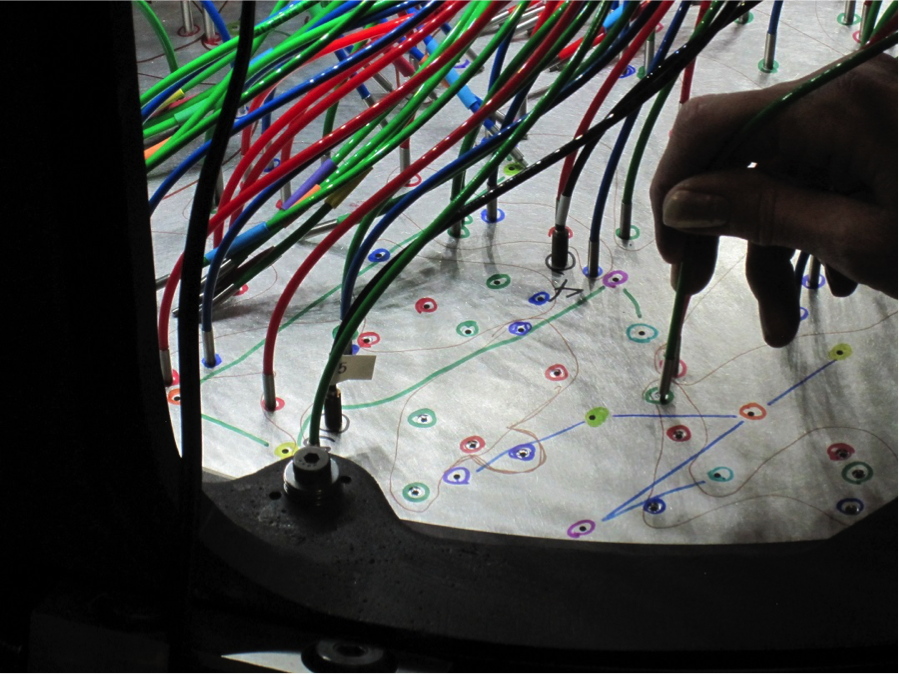Pascal Bettex
The first effort to chart millions of the brightest stars visible from Earth began in the late-19th century, enabled by the invention of analogue photography. Over 22 years, the SDSS or Sloan Digital Sky Survey’s ultra-high-resolution digital imaging detectors combined with Nobel Prize-winning fibre optic and spectrographic technologies have empowered astronomers to scan more than a third of the entire sky, as shown on the map below.
For Cosmos Archaeology, the Swiss kinetic artist Pascal Bettex was invited to create an installation using a set of retired SDSS plates. Pierced with up to 600 tiny holes and placed at the focal plane of the 2.5-meter telescope at Apache Point Observatory, New Mexico, in a former life, the plates were precisely aligned with a selection of stars, galaxies, or quasars. On an optimal night, SDSS astronomers might map 5000 astronomical objects using up to nine plates. Perforated by light to create unfathomed constellations, Star Mapping Sculpture puts these discs into eccentric motion to reimagine the Universe and its orbital mechanics.

Image and caption credit: M. Blanton and the Sloan Digital Sky Survey. CC-BY-0.3. Source: classic.sdss.org

Courtesy of the Sloan Digital Sky Survey. CC-BY-0.3.

Courtesy of the Sloan Digital Sky Survey. CC-BY-0.3.